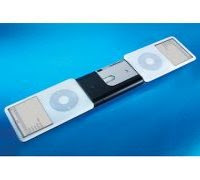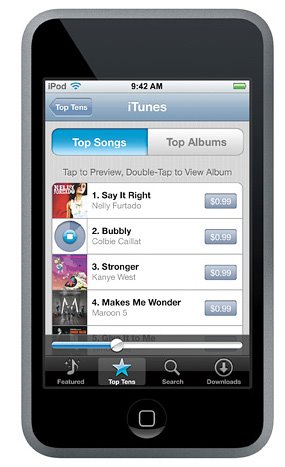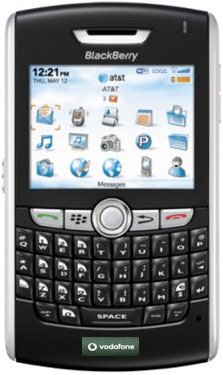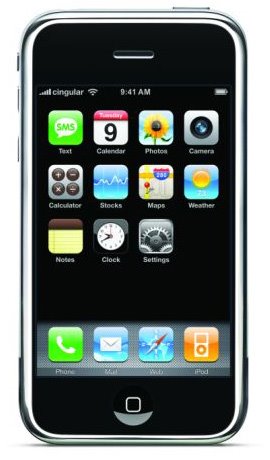Hackers that use their hacking skills for good are referred to as "white hat" hackers. Often referred to as Ethical Hackers, these non-criminal hackers are hired by companies to examine and test the integrity of their systems. Other white hat hackers, operate without company permission by bending but not breaking the laws and int progress have created some very cool features. This article examines and selects the Five Best Non-Criminal Hackers and the innovations and technologies that they have developed:
1. Stephen Wozniak
Nicknamed Woz, he is often referred to as the other Steve of Apple. Wozniak and Steve Jobs, co-founded Apple Computer. Woz started his hacking making blue boxes, which are devices that bypass telephone switching mechanisms enabling users to make free long distance calls. Woz and Jobs sold these blue boxes to their classmates in college and even used a blue box to call the Pope while pretending to be Henry Kissinger.
Wozniak dropped out of college and invented the compute that made him famous. Jobs had the idea to sell the computer as a fully assembled PC board. The idea was conceived and developed in Jobs garage. Wozniak and Jobs sold the first 100 of the Apple I to a local dealer for $666.66 each.
Woz currently focuses on philanthropy and no longer works full time for Apple. "Wozniak 'adopted' the Los Gatos School District, providing students and teachers with hands-on teaching and donations of state-of-the-art technology equipment."
2. Tim Berners-Lee
Berners-Lee is credited with being the inventor of the World Wide Web. Berners-Lee has been honored with numerous recognitions incuding the Millennium Technology Prize.
Berners-Lee was first caught hacking access codes with a friend while a student at Oxford University. He was then banned from the University computers.
Berners-Lee realized that hypertext could be joined with the Internet. Berners-Lee recounts how he put them together: "I just had to take the hypertext idea and connect it to the TCP and DNS ideas and – ta-da! – the World Wide Web."
Since his creation of the World Wide Web, Berners-Lee founded the World Wide Web Consortium at MIT. The W3C describes itself as "an international consortium where Member organizations, a full-time staff and the public work together to develop Web standards." Berners-Lee's World Wide Web idea, as well as standards from the W3C, is distributed freely with no patent or royalties due.
3. Linus Torvalds
Torvalds fathered Linux, the very popular Unix-based operating system. He calls himself "an engineer," and has said that his aspirations are simple, "I just want to have fun making the best damn operating system I can."
Torvalds got his start in computers with a Commodore VIC-20, an 8-bit home computer. He then moved on to a Sinclair QL. Wikipedia reports that he modified the Sinclair "extensively, especially its operating system." Specifically, Torvalds hacks included "an assembler and a text editor…as well as a few games."
Torvalds created the Linux kernel in 1991, using the Minix operating system as inspiration. He started with a task switcher in Intel 80386 assembly and a terminal driver. After that, he put out a call for others to contribute code, which they did. Currently, only about 2 percent of the current Linux kernel is written by Torvalds himself. The success of this public invitation to contribute code for Linux is touted as one of the most prominent examples of free/open source software.
Currently, Torvalds serves as the Linux ringleader, coordinating the code that volunteer programmers contribute to the kernel. He has had an asteroid named after him and received honorary doctorates from Stockholm University and University of Helsinki. He was also featured in Time Magazine's "60 Years of Heroes."
4. Richard Stallman
Stallman's fame derives from the GNU Project, which he founded to develop a free operating system. For this, he's known as the father of free software. His "Serious Bio" asserts, "Non-free software keeps users divided and helpless, forbidden to share it and unable to change it. A free operating system is essential for people to be able to use computers in freedom."
Stallman, who prefers to be called rms, got his start hacking at MIT. He worked as a "staff hacker" on the Emacs project and others. He was a critic of restricted computer access in the lab. When a password system was installed, Stallman broke it down, resetting passwords to null strings, then sent users messages informing them of the removal of the password system.
Stallman's crusade for free software started with a printer. At the MIT lab, he and other hackers were allowed to modify code on printers so that they sent convenient alert messages. However, a new printer came along – one that they were not allowed to modify. It was located away from the lab and the absence of the alerts presented an inconvenience. It was at this point that he was "convinced…of the ethical need to require free software."
With this inspiration, he began work on GNU. Stallman wrote an essay, "The GNU Project," in which he recalls choosing to work on an operating system because it's a foundation, "the crucial software to use a computer." At this time, the GNU/Linux version of the operating system uses the Linux kernel started by Torvalds. GNU is distributed under "copyleft," a method that employs copyright law to allow users to use, modify, copy and distribute the software.
Stallman's life continues to revolve around the promotion of free software. He works against movements like Digital Rights Management (or as he prefers, Digital Restrictions Management) through organizations like Free Software Foundation and League for Programming Freedom. He has received extensive recognition for his work, including awards, fellowships and four honorary doctorates.
5. Tsutomu Shimomura
Shimomura reached fame in an unfortunate manner: he was hacked by Kevin Mitnick. Following this personal attack, he made it his cause to help the FBI capture him.
Shimomura's work to catch Mitnick is commendable, but he is not without his own dark side. Author Bruce Sterling recalls: "He pulls out this AT&T cellphone, pulls it out of the shrinkwrap, finger-hacks it, and starts monitoring phone calls going up and down Capitol Hill while an FBI agent is standing at his shoulder, listening to him."
Shimomura out-hacked Mitnick to bring him down. Shortly after finding out about the intrusion, he rallied a team and got to work finding Mitnick. Using Mitnick's cell phone, they tracked him near Raleigh-Durham International Airport. The article, "SDSC Computer Experts Help FBI Capture Computer Terrorist" recounts how Shimomura pinpointed Mitnick's location. Armed with a technician from the phone company, Shimomura "used a cellular frequency direction-finding antenna hooked up to a laptop to narrow the search to an apartment complex." Mitnick was arrested shortly thereafter. Following the pursuit, Shimomura wrote a book about the incident with journalist John Markoff, which was later turned into a movie.






 Sony Ericsson W960i Walkman®: Advantage Features for Music Maniac
Sony Ericsson W960i Walkman®: Advantage Features for Music Maniac Sony Ericsson W960 Walkman® also comes with a useful music feature, which is supporting music recognition feature know as TrackID™. TrackID™ is powered by Gracenote mobile music, this feature is quick and easy use that allows the user to record a few seconds worth of a song that they like, and then will be sent to TrackID™ which will provide the user with the name of the song, artist or band name and the album name within a few seconds.
Sony Ericsson W960 Walkman® also comes with a useful music feature, which is supporting music recognition feature know as TrackID™. TrackID™ is powered by Gracenote mobile music, this feature is quick and easy use that allows the user to record a few seconds worth of a song that they like, and then will be sent to TrackID™ which will provide the user with the name of the song, artist or band name and the album name within a few seconds. Sony Ericsson W960 Walkman® also comes with PlayNow™ feature, which is allowing it user to buy or audition ring tones in three clicks of a key, which is the fastest way to download the latest ring tones to their cell phone.
Sony Ericsson W960 Walkman® also comes with PlayNow™ feature, which is allowing it user to buy or audition ring tones in three clicks of a key, which is the fastest way to download the latest ring tones to their cell phone.










